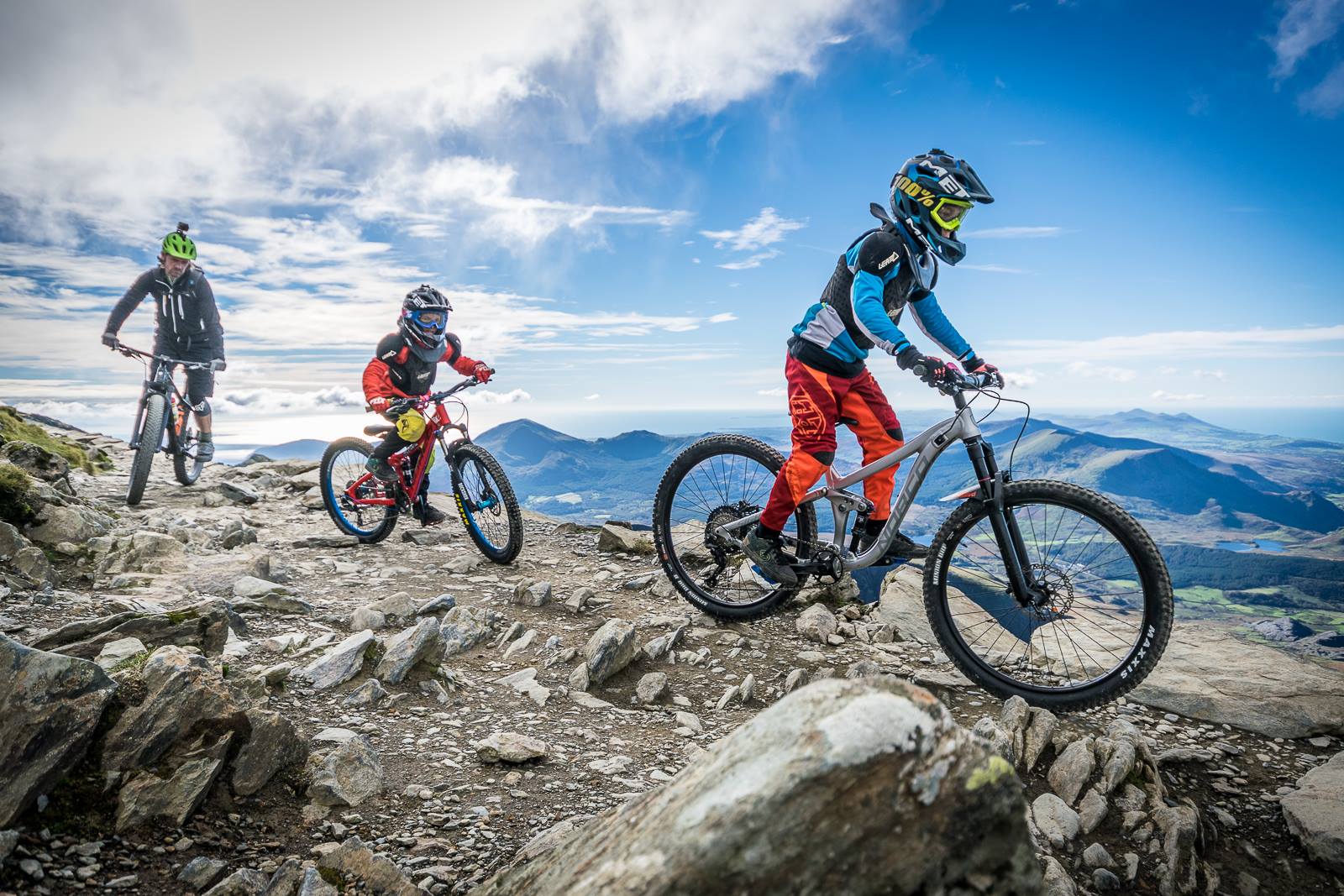The Chain
The chain. Perhaps the most important piece of engineering on the bicycle. Without a working chain, you’re just riding a scooter, right?
So, here’s my take on the chain – what it is, how it works, how to fit it, and how to keep it running smoothly.
What is a chain?
Basically, it’s a bunch of rollers, held together by pins which are secured by plates (inner and outer plates). The inner plates are deformed to provide a kind of bushing which helps to hold the rollers in place, and allows for side to side deformation – important when you’re running a derailleur system, as the chain is forced out of line as it moves through the gears.
All mountain bikes use 3/32″ width chains. That’s the width between the inner plates. The width of the outer plates varies depending on how many sprockets you want to run: 6.2mm for 10 speed, 6.8mm for 9 speed, and 7.2mm for 8 speeds or less. Make sure you have the right chain for your cassette and chainset.
Measuring chain length:
The chain should be long enough that it allows all combinations of gears to be achieved whilst ensuring that there isn’t too much or too little tension on the rear derailleur. When on the biggest sprocket and biggest chainring the derailleur should be at approximately a 45 degree angle. When on the smallest rings the derailleur should still be tensioning the chain a little (i.e. the chain shouldn’t be slack)
To measure the chain, wrap it around the biggest chainring and sprocket, missing the derailleut completely. Measure to the where the chain joins and then add 2 complete links.
Joining the chain:
There are a couple of options for joinging a chain: powerlinks (or one-time-use powerlocks) – used by SRAM and some other manufacturers, or snapper pins – used by Shimano.
The powerlink type joiner consists of two outer plates, each with a single pin, and these are pressed through the open ends of two inner links from opposite sides, and then pulled tight to lock into place.
The snapper pins are replacement pins used to connect inner and outer plates directly. They come in a single piece which has a disposable front half with a bevelled edge to allow easy fitting. When in place the disposable half is snapped off leaving the ‘proper link’ in place.
It is possible to rejoin a chain using the existing pins – a useful technique if you’re out on the trail, snap the chain, and don’t have any linkers or pins. Push a link most of the way through the chain, but not fully out, then join the chain and push the link back through. This can cause a stiff link – to free the link form a V shape with the stiff link at the bottom of the V, then bend from side to side a little.
Chain maintenance:
I often demonstrate chain maintenance to customers in the shop. I figure that it’s quick, it’s easy, and it’s the one thing that’s going to save them money more effectively than anything else they do with their bike.Non-maintenance leads to rust, dirt build-up. and excessive wear, and that leads to wear on the chainrings and sprockets. Eventually you have to replace the lot.
So here it is. After every ride, spin the chain slowly and spray a water repellant onto the inside of the chain. After a minute or so, wipe the chain clean. Then apply some chain oil in the same way. There’s a lot of debate about what oil is best, whether or not to use WD40 etc. In the end, if you clean the chain, get the water out, and then lube it after every ride, it doesn’t really matter. It’s the regular maintenance that’s important.
When to replace your chain:
As you ride the rollers in the chain wear creating a larger distance between the rollers, which creates the effect of chain stretch (the chain doesn’t actually stretch).As the gap increases between the rollers, then the teeth on the chainrings and sprockets begin to wear too, in order to match the gap width in the chain.
Chain wear indicators can be used to detect how worn your chain is, by measuring the gap between the rollers. If you catch the chain early enough (i.e. before it’s stretched by 1%) then you should replace the chain. If you let the chain wear more than this, then a new chain probably won’t mesh correctly with the chainring and sprocket teeth, and will slip and jump as you pedal. At this point you’ll need to replace the chainrings, sprockets and chain altogether.
If you’ve snapped your chain, and it’s very worn, but it isn’t jumping on the sprockets, then you’re probably better off continuing to use that chain (shorten it to rejoin it) rather than replacing it with a new one. Save some money for next time it snaps though, and be aware that you probably won’t have a full range of gears with a shortened chain, so take care not to run big chainring to big sprocket!
Why did my chain snap?
I make a point of asking where people were when their chain snapped. More often than not they were pedalling up hill and chaining down to an easier gear. The chain snaps at this point because they’re forcing it to chain when it’s under maximum load. They’re also switching the chain up to a bigger sprocket, effectively increasing the tension on the chain.
To avoid this problem I advice a slight acceleration before changing gear, and then easing off at the moment of change. This reduces tension on the chain, and makes for smoother shifting. If you get this technique right then you’ll notice the difference by a decrease in noise from the drivechain whilst changing gear.
So that’s it. A simple guide to the chain (and less than 1000 words!)












